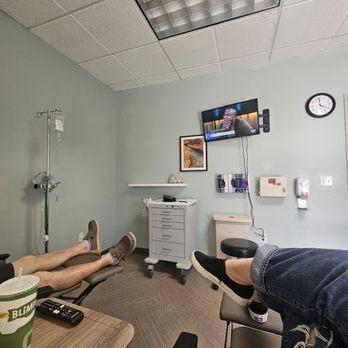Option Care Health (OPCH), a prominent player in the home infusion therapy sector, is facing mounting pressure as recent financial reports reveal a notable decline in profit margins. This downturn poses significant challenges to the previously optimistic valuation narratives that have buoyed investor confidence. As analysts reassess growth prospects and market expectations, the company’s ability to navigate operational hurdles will be closely scrutinized amid a shifting healthcare landscape.
Option Care Health Faces Margin Pressure Undermining Investor Optimism
Option Care Health’s recent financial results reveal significant margin compression that is raising eyebrows among investors and analysts alike. Despite top-line growth driven by expanded patient volumes and new service initiatives, rising operational costs-particularly in labor and supply chain expenses-are squeezing profitability. This shift challenges the previously bullish valuation narratives that had been built on expectations of scalable margin expansion and operational leverage in the home infusion market.
Key factors contributing to this pressure include:
- Increased wage inflation impacting clinical and administrative staff costs
- Supply chain disruptions elevating pharmaceutical and equipment expenses
- Higher investment in technology and compliance mandates
| Margin Metric | Q1 2023 | Q1 2024 | Change |
|---|---|---|---|
| Gross Margin | 32.5% | 28.1% | -4.4% |
| EBITDA Margin | 15.8% | 11.2% | -4.6% |
| Operating Margin | 10.3% | 6.9% | -3.4% |
As these margin declines persist, the market is beginning to question whether Option Care Health can sustain its premium valuation multiples. Investors are closely watching management’s ability to navigate cost inflation while maintaining service quality and growth momentum in this increasingly competitive healthcare segment.
Analyzing Operational Challenges Impacting Profitability and Growth Prospects
Option Care Health’s recent financial reports underscore a troubling trend: shrinking margins that threaten its optimistic valuation outlook. Several operational hurdles have been identified as key contributors to this decline, including rising labor costs, supply chain disruptions, and increased regulatory compliance expenses. These factors collectively weigh on the company’s ability to sustain profitability, despite growing revenue streams driven by expanded home infusion services. The intricate balance between scaling operations and maintaining cost efficiency appears to be increasingly challenging.
Key operational challenges impacting profitability include:
- Workforce shortages: Rising wage demands and difficulty in recruiting skilled nurses have driven up labor costs significantly.
- Supply chain instability: Delays and cost spikes in medical supplies result in unpredictable expenses and inventory management issues.
- Regulatory pressures: Heightened compliance measures introduce both administrative overheads and potential penalties.
These issues not only compress profit margins but also cast uncertainty on the company’s growth trajectory. Investors should weigh these operational complexities against the bullish narratives surrounding OPCH, as sustained margin pressure may cap upside potential in the near term.
| Operational Factor | Impact on Profitability | Growth Implication |
|---|---|---|
| Labor Costs | High and Increasing | Limits margin expansion |
| Supply Chain | Volatile, cost-intensive | Disrupts service delivery |
| Regulatory Compliance | Rising administrative expenses | Slows operational agility |
Strategic Recommendations for Restoring Confidence and Stabilizing Valuation
Option Care Health must prioritize operational efficiency improvements to counteract the ongoing margin pressures. By streamlining supply chain processes and renegotiating vendor contracts, the company can reduce cost burdens without compromising care quality. Equally important is the adoption of advanced data analytics to optimize patient care pathways, enhancing both outcomes and profitability. The strategic reinvestment in technology and workforce training will be pivotal in driving sustainable margin recovery, which investors are keenly eyeing as a signal of financial discipline and growth potential.
Key initiatives to stabilize valuation include:
- Enhancing cash flow visibility through real-time financial reporting
- Strengthening partnerships with payers to secure favorable reimbursement rates
- Expanding high-margin service lines with targeted marketing campaigns
- Executing divestitures of underperforming assets to bolster balance sheet health
| Recommendation | Expected Impact | Timeline |
|---|---|---|
| Operational efficiency overhaul | 5-7% margin improvement | 12-18 months |
| Data-driven patient care optimization | Enhanced patient outcomes, cost reduction | 6-12 months |
| Payer partnership expansion | Increased reimbursement rates | Ongoing |
| Asset divestiture strategy | Improved liquidity | 3-6 months |
Wrapping Up
As Option Care Health navigates the pressures of margin compression, investors and analysts alike are reassessing the company’s optimistic valuation outlook. While the broader healthcare sector continues to grapple with operational challenges, OPCH’s margin decline underscores the complexities facing home infusion providers in a competitive and cost-sensitive environment. Moving forward, market participants will be closely watching how the company adapts its strategies to restore profitability and sustain growth momentum.






























